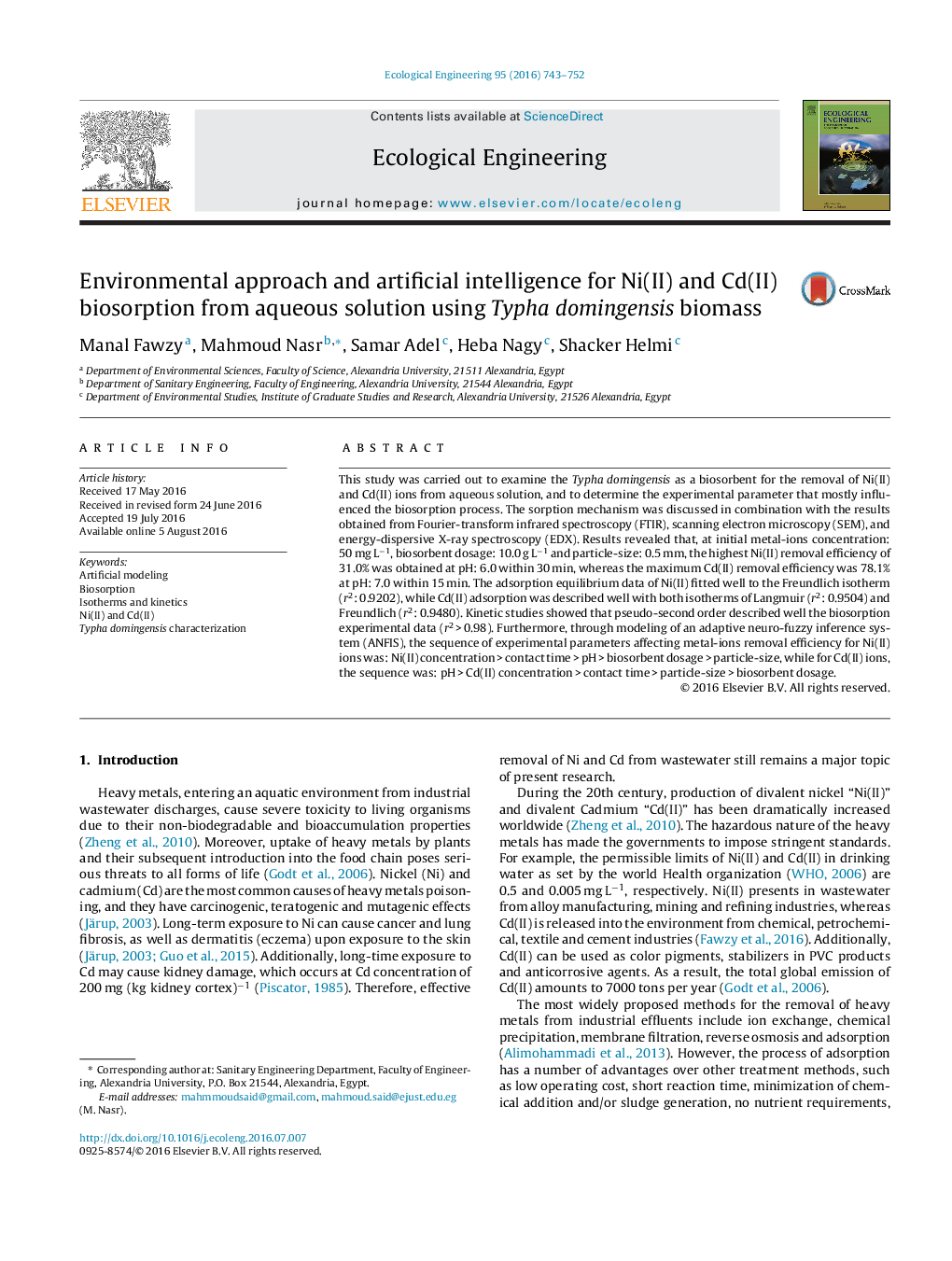| کد مقاله | کد نشریه | سال انتشار | مقاله انگلیسی | نسخه تمام متن |
|---|---|---|---|---|
| 4388505 | 1618004 | 2016 | 10 صفحه PDF | دانلود رایگان |

• Typha domingensis biomass was examined for removal of Ni(II) and Cd(II).
• Equilibrium times for Ni(II) and Cd(II) adsorption were 30 and 15 min, respectively.
• Optimum pH values for Ni(II) and Cd(II) removal were 6.0 and 4.0–8.0, respectively.
• Sorption of pure metal-ions solution showed higher capacity for Cd(II) over Ni(II).
• Artificial intelligence indicated that removal of Cd(II) was mainly pH-dependent.
This study was carried out to examine the Typha domingensis as a biosorbent for the removal of Ni(II) and Cd(II) ions from aqueous solution, and to determine the experimental parameter that mostly influenced the biosorption process. The sorption mechanism was discussed in combination with the results obtained from Fourier-transform infrared spectroscopy (FTIR), scanning electron microscopy (SEM), and energy-dispersive X-ray spectroscopy (EDX). Results revealed that, at initial metal-ions concentration: 50 mg L−1, biosorbent dosage: 10.0 g L−1 and particle-size: 0.5 mm, the highest Ni(II) removal efficiency of 31.0% was obtained at pH: 6.0 within 30 min, whereas the maximum Cd(II) removal efficiency was 78.1% at pH: 7.0 within 15 min. The adsorption equilibrium data of Ni(II) fitted well to the Freundlich isotherm (r2: 0.9202), while Cd(II) adsorption was described well with both isotherms of Langmuir (r2: 0.9504) and Freundlich (r2: 0.9480). Kinetic studies showed that pseudo-second order described well the biosorption experimental data (r2 > 0.98). Furthermore, through modeling of an adaptive neuro-fuzzy inference system (ANFIS), the sequence of experimental parameters affecting metal-ions removal efficiency for Ni(II) ions was: Ni(II) concentration > contact time > pH > biosorbent dosage > particle-size, while for Cd(II) ions, the sequence was: pH > Cd(II) concentration > contact time > particle-size > biosorbent dosage.
Journal: Ecological Engineering - Volume 95, October 2016, Pages 743–752